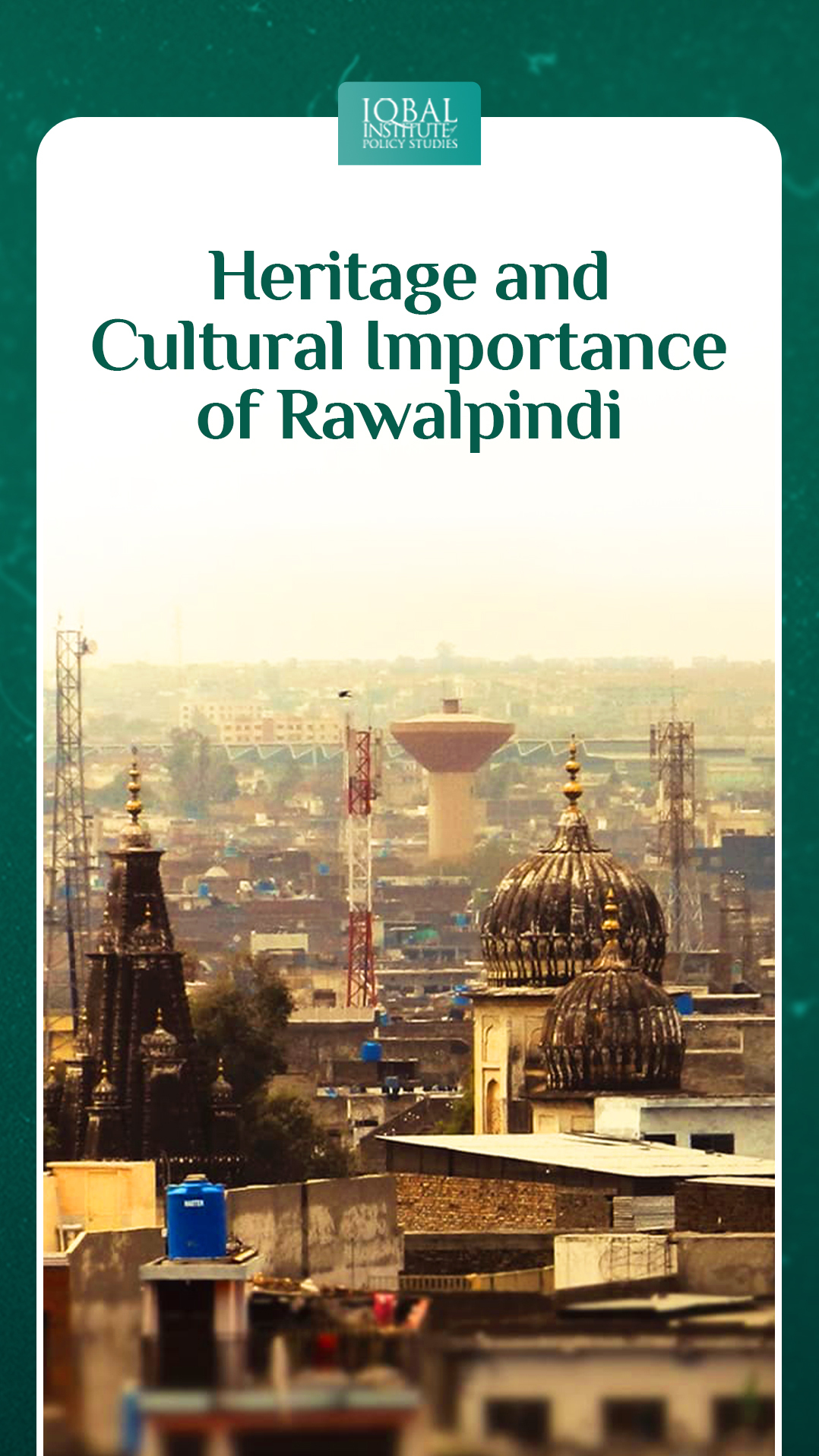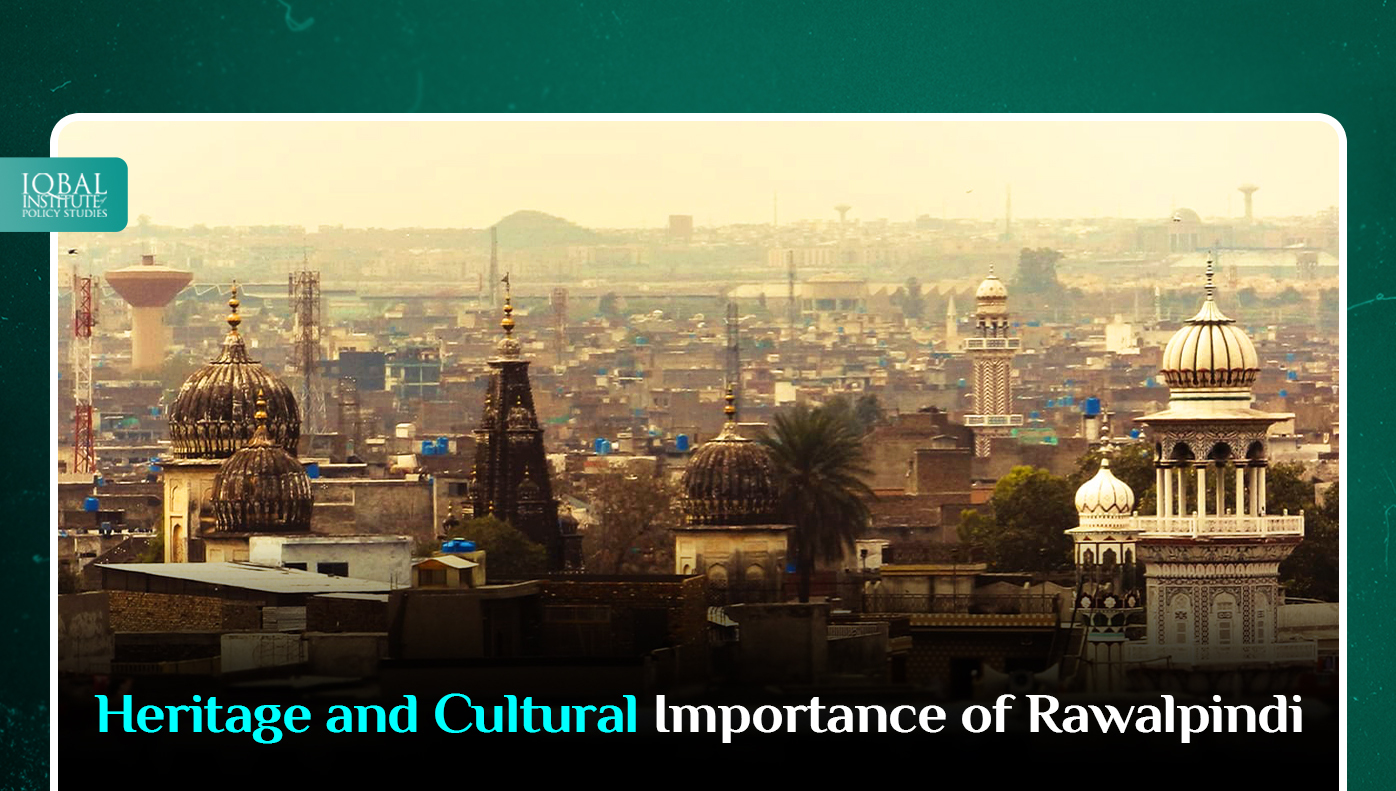Neglected for decades despite its unique cultural and architectural heritage, Rawalpindi, Pakistan’s fourth largest city is back on the radar as young people arrange self-guided walks to explore the centuries-old city. Its origin dates back thousands of years ago. It has witnessed the ebb and flow of several empires, the arrival of different cultures, and the development of unique architectural styles.
In this blog, we will discuss Rawalpindi’s heritage and cultural aspects and how it transformed through time.
Rawalpindi
In the Potohar region, Rawalpindi is known for its historic Buddhist heritage, especially in the neighbouring town of Taxila. It is a gateway for northern Pakistan. The city is home to historic havelis and temples. It is a hub for tourists visiting Rohtas Fort, Azad Kashmir, Taxila and Gilgit-Baltistan. The town falls within the ancient boundaries of Gandhara and is in a region cluttered with Buddhist ruins.
Ancient Roots
Rawalpindi’s history can be traced back to ancient times, with evidence of human settlement in the region dating back to the Palaeolithic era. Various civilisations have inhabited the area, including the Gandhara, Greeks, Mauryans, Kushans, and the Mughals.
Buddhist Legacy
During the reign of the Gandhara civilisation, Rawalpindi was an important centre for Buddhism. The region is dotted with ancient Buddhist sites, such as the Dharmarajika Stupa in Taxila and the nearby Buddhist ruins of Sirkap.
Mughal Influence
In the 16th century, the Mughal Empire influenced Rawalpindi. Emperor Akbar the Great visited the region and constructed a garden known as Gulhar Bagh, which served as a hunting ground and a retreat for the royal family.
British Era
Rawalpindi’s history significantly turned during the British colonial period. The city became a major garrison town and an important military cantonment. The British developed several iconic structures, including the Rawalpindi Railway Station, the Saint Joseph’s Cathedral, and the Rawalpindi Club.
Historical Landmarks
Rawalpindi has numerous historical landmarks showcasing its rich heritage. The Raja Bazaar, one of the oldest markets in the city, offers a glimpse into its traditional architecture and bustling atmosphere. Other notable landmarks include the Ayub National Park, Liaquat Bagh (where former Prime Minister Benazir Bhutto was assassinated), and the Rawalpindi Museum, which houses a diverse collection of regional artefacts.
Military Significance
Rawalpindi has been an important military city throughout its history. The Pakistan Army’s General Headquarters (GHQ) is located in Rawalpindi, emphasising its strategic importance. The Army Museum and the Pakistan Military Academy in nearby Kakul are worth visiting to explore the region’s military heritage.
Cultural Diversity
Rawalpindi is known for its diverse culture, influenced by various ethnicities and traditions. The city is a melting pot of communities, including Punjabis, Kashmiris, Hazaras, and others. One can experience this cultural richness by exploring the local cuisine, attending festivals, or visiting historical neighbourhoods like Saddar, a blend of traditional and modern architecture.
Shopping and Cuisine
Rawalpindi offers a rich shopping experience, with markets like Raja Bazaar, Sadar Bazaar, and Kashmiri Bazaar offering a wide range of goods, including handicrafts, textiles, jewellery, and traditional clothing. The famous local cuisine includes mouth-watering dishes such as Pindi Chole, Peshawari Chapli Kebab, and Falooda.
Natural Beauty
The city is surrounded by scenic hills, including the Margalla and Murree Hills, offering breathtaking views and opportunities for hiking and nature walks.
Heritage and Cultural Sites
The city’s cultural and heritage importance is reflected in the unique, though decaying, beauty of its buildings and streets, which bear the signs of all the hands the city has passed through. Some of the major historical sites of Rawalpindi are discussed below:
Christ Church Rawalpindi
The Christ Church Rawalpindi was built in the Gothic style in 1852. The church is considered among the oldest buildings in Rawalpindi.
Golra Sharif-Peer Mehr Ali Shah
It is a 20th-century Sufi shrine that serves as the tomb of the Peer Meher Ali Shah.
Rawalpindi RailwayStation 1881
The Rawalpindi railway station belonged to the British era and was opened in 1881 during the construction of the Punjab Northern State Railway, which began in 1870.
Sujan Singh Haveli
Situated in the city’s narrow streets, the haveli was the outstanding creation of Rai Bahadur Sujan Singh in 1890. The four-storey building was built on 24,000 square feet, comprising 45 rooms, including four big hall-like rooms lit in the evenings by huge lamps and chandeliers. The walls of the building were beautifully decorated with antiques, Victorian furniture and a multitude of silver and gold-ware.
Some Hidden Treasures of Rawalpindi
Sangni Fort
A remnant of the Mughal era: The Sangni Fort, perched on a picturesque location overlooking two rivulets, is most spectacular.
The Shrine of Saint Sahibzada Abdul Hakim built in 1993
Inside the fort is a shrine of Abdul Hakeem, who came from Arabia via Iran to preach in the area.
Ruins of Pharwala Fort
Pharwala Fort is located in the Kahuta district, about 40 KM from Rawalpindi.
Pharwala Haati
In 1519, the fort was briefly under the control of Mughal Emperor Babur. However, It was returned to the Gakhars.
Attock Fort
The Fort was strategically made in typical Mughal architecture, with the river on one side and the harsh jungle on the other.
The 150-year-old Poonch House
The 150-year-old Poonch House in the heart of Rawalpindi has served as a rest house for kings and princes.
The Radhe Shyam and Water Tank
The Radhe Shyam Temple is noted for being the tallest temple in Potohar.The Narali Pond is styled in ancient masonry. A huge water tank was built by Harnam Singh, in memory of his father Teja Singh and his uncle Sant Sahib Singh in 1929″.
Old Bhabra Bazar
The word ‘Bhabra’ derives from Sanskrit, indicating a merchant community belonging to the Jain religion.
Current Situation
The city of Rawalpindi has a unique and diverse history that is unfortunately no longer known even to most of its residents. Even today, deep in the heart of Rawalpindi, families reside in original buildings dating back to the pre-partition era, many of which still carry remains of carvings and decorations put in place by the original inhabitants. These old buildings are now in disrepair and need proper maintenance and upkeep. Encroachment, demolition, vandalism, extremism – there is no shortage of problems for heritage sites. Building laws and municipal regulations are virtually non-existent. Negligence by the concerned authorities has given local municipal authorities the approval to demolish heritage buildings and sites. Commercialisation has trumped heritage. Heretics have squashed history. Today, the view from the metro bus offers a gloomy look at the furious skyline of a city which does not know what it wants to be as it has forgotten what it once was.
Conclusion
Once, Rawalpindi was the epitome of cultural heritage with a unique amalgamation of old and new architecture, but now it has become a chaotic labyrinth. Over the years, people that have been allotted these vacant properties have damaged them due to sheer negligence, and today these buildings are no more than a shadowy reflection of their former glory. However, it has believed that Rawalpindi still has the potential to become the epicentre of regional heritage, but only if preservation work is begun immediately.



Leave a Reply